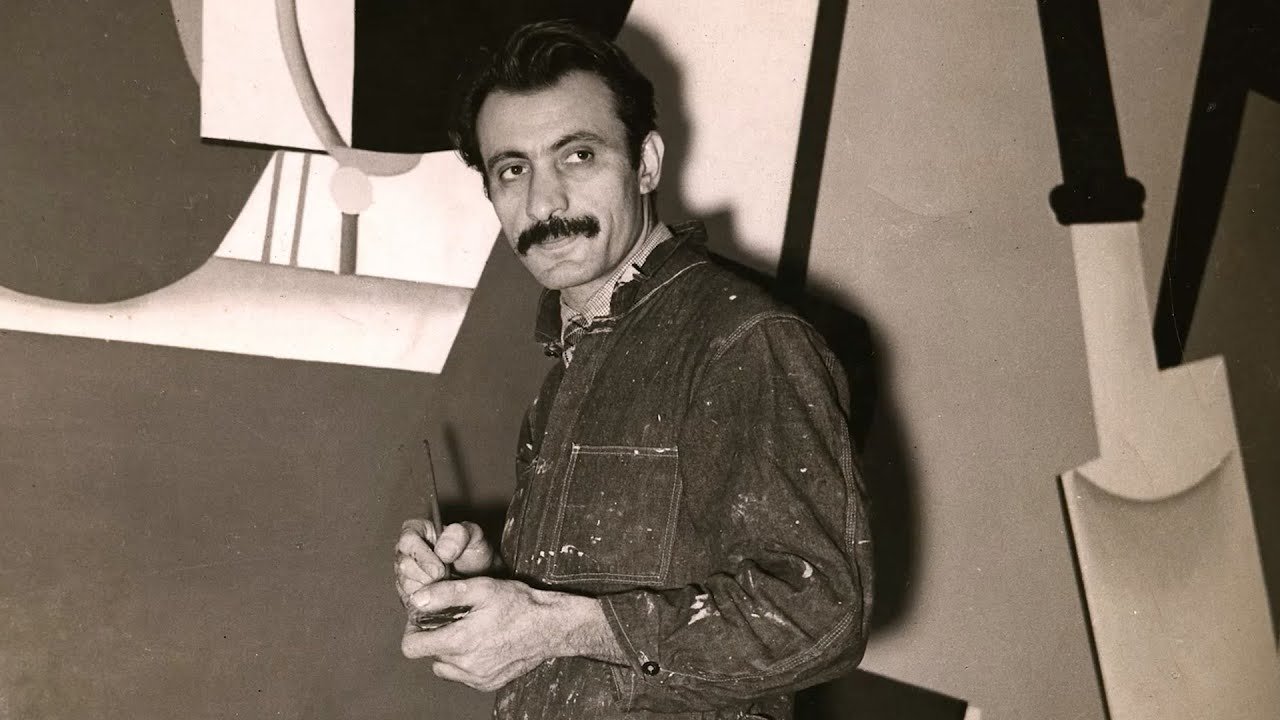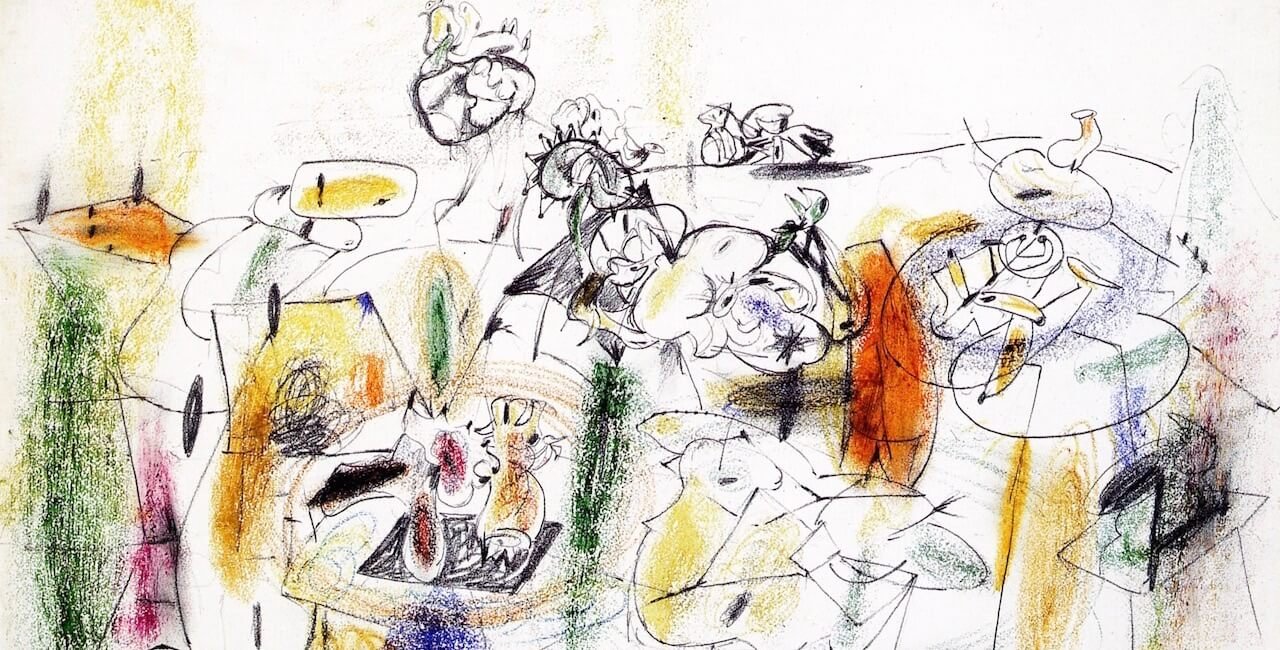
Arshile Gorky
Arshile Gorky (American, 1904–1948) was one of the most renowned artists of the early New York School, and was profoundly influential on the next generation of artists, even after his tragic early death. Gorky was born Vostanik Manoog Adoyan in the small village of Khorkom in Turkish Armenia. At the height of the Armenian Genocide, his father fled to the United States to avoid the draft when Gorky was still a boy; Gorky was not reunited with him until 1920, when he arrived with his sister in the United States after witnessing the death of his mother at the hands of Turkish militants. In 1925, he moved to New York City and adopted the pseudonym Arshile Gorky, claiming to be a relative of the Russian writer, Maxim Gorky.
In New York City, Gorky studied at the Grand Central Art School, quickly rising from the position of student to educator. His works during this time reflected the current Modernist style and the mature styles of Paul Cezanne and Pablo Picasso. Gorky befriended a number of emigrant artists during the 1930s, including Willem de Kooning and Mark Rothko, becoming an influential figure in both of their artistic developments. During the 1940s, Gorky developed an individual style, based on biomorphic forms and fluid imagery, drawing on Surrealism and the work of Andre Breton. From 1942 on, Gorky lived in the countryside in Sherman, CT, where, following a series of devastating personal events, he committed suicide in 1948.







